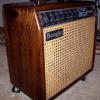Leaderboard
Popular Content
Showing content with the highest reputation on 04/17/2019 in all areas
-
I apologize in advance for the long post, but hopefully there's a few tidbits of info that may be useful to some members of the forum in here. We've seen a number of discussions recently regarding where to set your Helix master volume setting, the pros and cons, and the speculations. I've mentioned several times that I normally have mine set at 11 o'clock when I'm working on and normalizing the volume of my patches, and have had it there with no problems for the last 3 1/2 years. However I have had some concerns about that that particular setting that really doesn't relate to better or worse quality of tone, but revolves more around having a better setup that's more easily managed. This stems from the fact that my rig is setup to use an on stage Yamaha DXR12 as my stage speaker which I position behind me on a half height stand in a normal backline situation, and a separate XLR output that goes direct to the mixing board using an inline phantom power blocker. I've disengaged my Helix master volume from controlling my XLR outputs and have set those XLR outputs to Mic level with my 1/4" output going to the DXR12 at line level and being controlled by the Helix master volume knob. This isolates any on stage volume changes made on the Helix volume knob from impacting the XLR signal level output to the mixer. And although this has worked perfectly in a wide range of settings with different PA's or with just using the DXR12 for instrument and vocals only through a PA, it has concerned me at a couple of levels for a while that made me start considering a change in the Helix volume knob setting. As far as background info, as you may know, when you disengage the Helix volume knob from affecting an XLR or 1/4" out, the Helix defaults to sending a signal that's equivalent to having your Helix volume knob maxed out on that output line. Even sending that XLR signal out at Mic level (which is quite a bit lower than Line level), there's still a considerable difference in the signal strength that goes into the mixing board, causing it to need the gain setting on the channel to be cut down considerably due to the volume levels within my patches which are higher due to having my Helix volume set at 11 o'clock. This isn't a huge issue as it can easily be gain staged at the board to unity, but it could present problems on certain mixing boards that might not have very capable channel preamp setups on their mixer. So by raising the Helix master volume up to 3 o'clock and adjusting my internal preset volumes lower, I can minimize this major disparity between the two signals that could potentially be a problem. Although I might lose some of the overall headroom for making volume adjustments to my on stage setup, I've never had to raise my Helix volume above 12 o'clock. So setting it at 3 o'clock gives me ample room for adjustment, and actually more headroom within my patches for adjusting master and channel volumes on the various amp models. I did this adjustment on six of my presets this morning and all went quickly and very well, although there were a few things I learned in doing it that may be something people need to consider. Although it's generally held that making volume adjustments in your preset using the channel volume of the amp won't affect the overall tone of your patch, that's true except for patches that contain effects after the amp since they're receiving a much lower input signal. Most of my post amp effects tend to be EQ's, compressors, reverbs, delays, twin harmony, and an occasional chorus or phaser, but that's pretty rare. First I didn't notice any kind of quality level difference in the sound by having higher Helix volume setting once I adjusted my amp levels. What was most noticeable were the level of dynamics in picking or plucking the strings harder. Not a huge difference, but noticeable. I suspect this may be attributed to the circuitry modeled in the amps that may act as a limiter if the channel volume is very high. What was most affected was my post amp compressor which is typically the LA Compressor. With the lower amp channel volumes I noticed I needed to raise my Peak Reduction or amount of compression from my normal settings of around 5.5 to up around 6 or 6.5 and that I needed to also raise my compressed/dry mix from around 80 to up around 90. I suspect these are artifacts from the greater dynamic range I got from the amp models when I lowered the channel volumes. Other than that I can't say I ran into any problems with the reverbs/delays or EQs. I wasn't working with any patches that used the Twin Harmony, but that will be the next thing I concentrate on. In the end I was able to accomplish what I set out to accomplish with my disengaged XLR output line signal now falling in line with the rest of the normal XLR inputs from other sources which is exactly what I was after. Hopefully some of this info will be useful to others.5 points
-
It's true there are huge numbers of posts about people struggling to learn how to use their complex digital gear. However, if you go over to places like the Gear Page you'll see there are, arguably, double or quadruple that number of posts about people struggling to know the best way to use traditional gear. The difference is perception. We interpret the digital examples as reasons why they're inferior to traditional gear, and the traditional gear examples as just part of the learning curve. The truth is that both examples are just learning curve examples. Playing music well, particularly on a performance level, has a huge learning curve regardless of the gear. That's part of what should attract us to it.3 points
-
I think that's an interesting perspective, but I think Line 6 clearly markets it more as a performance unit with the recording aspect channeled more into Helix Native. I think the barriers you talk about with live performance has more to do with the human element. In other words, people have a hard time changing from the ways that they're used to doing them in. I have an uncle who to this day hates driving anything that isn't a stick shift, even though the fact is that a stick shift is now the less efficient and optimal way for any car to run. To him it just doesn't "feel right." For me, the evidence of this comes from watching younger musicians who didn't grow up for decades in the traditional amp approach. Like the younger crowd who has no problem with an automatic transmission "feeling right," the vast majority of them seem to have no problems or concerns gigging with units like the Helix, and indeed, seem to prefer them. We won't know until it happens, but I suspect 50 years from now everyone will recognize that units like the Helix were the natural transition to the future. What will be interesting is when it becomes less about emulating old ways and adapts more to being the best version of what digital can be.2 points
-
Recently I went through a bit of a 'what should I play helix' through issue where I was torn up on switching to Studio Monitors vs. my L6 L3Ms, etc.....Long story short, I am keeping my L3Ms but I did get to experiment with some decent studio monitors. I have been playing electric since '96 and have been in bands here and there over the years - some gigging experience with a few bands (some on guitar, some on drums) but right now I am not actively playing with a band nor have I ever integrated a digital modeller into a live band playing situation. When I tested some recording and using the studio monitors for audio referencing, it kind of became crystal clear; the stock presets which sound like lollipop through my L3M's at 'gig volume' fit almost perfectly in a recording mix with almost no adjustments! The Brit 2204 sounded like the real deal, not the swarm of usual bees, etc. I had this eureka moment - THIS IS WHAT IT WAS DESIGNED FOR. Honestly, I see this more so now as this brilliant little device whose main attraction and purpose is to fit into a recording mix, with ease, at any time and with little adjustment. I do also believe that none of this easily translates into a 'replacement for a traditional guitar amp' situation. Just hear me out..... Don't get me wrong. I love the Helix. I am not dogging on it. But I think there are inherent challenges considering this as a device used to 'replace' a traditional amp. This thought is supported by the SHEER number of forum posts here, and on gearpage, which are constantly about 'how to level presets' or 'how do I make it sound like a real amp' or 'how do you get this thing to not sound buzzy" or "how can I get it to sound and feel like an amp in the room or (insert any other wealth of similar forum posts). I think at its heart, it is main purpose is NOT for this scenario and thats why we see alot of hesitation, or confusion about how it is adopted as a more 'traditional' rig (instead of a recording interface). To me, Line 6's greatest challenge in their product offering here is not providing more amps, or more fx or whatever, but educating guitarists on where this fits into their life. By design, I see it excel as a recording device. Making those presets sounds good, or real, or proper, at volume (and as the inevitable replacement of traditional guitar amps over time) is the greatest challenge. Dont' flame me. haha.1 point
-
Amen. Any subtle nuances that one might notice playing unaccompanied whilst dialing in a patch vanish in a live mix anyway.... we all worry WAY too much about this $hit, lol. Play... have fun. Life is short. The gear I have now gives me the best, most consistent sound I've had in 25 years of doing this... I wish I had stuff this good when I was just getting started.1 point
-
It may have but he really didn't go into the setup of the output with the Fractal i.e. into 4cm, into FRFR speaker, though IEMs or stage monitors. How exactly did he "match" that sound exactly? Nor was he very specific about how he got the sound. We just have to take his word for it and bow in homage to his expertise. You have to excuse me but I've been around these kind of guys since the '70s so I tend to be a bit skeptical about their broad "expert" statements and their overrating of their ability to distinguish differences due to their "golden ears" that us common folk just simply don't have. The most telling statement was when he gushed all over about the sound of a good tube amp over any modeler as if that's the sound he's presenting to the audience. When most of us know what he's presenting to the audience is a mic capture of that sound, not the tube amp sound, but he assumes we're all to stupid to understand that. And if he loses the modeled sound in the mix there's a big problem with either his skills at the board or his skills at the modeler..or both. My opinion is that since the late 90's and especially over the past few years technology leaps not only in modeling but in many other instruments and technical leaps in sound reinforcement gear have made the "magic" and value they used to provide accessible to everyday musicians, so they're desperate to prove they've still got some value to offer. Case in point, these guys absolutely despise some of the new digital mixers that have advanced features like auto feedback detection and correction, auto room acoustic measurement and EQ setting, auto gain staging, and auto conference volume management. Things that they could only do are now done automatically for anyone that can push a button. Their response is always, "it's not as good as when it's done by trained ear, even if you poor schmucks can't hear the difference".1 point
-
My experience has been similar. I just don't find enough of a difference to warrant not using my Master volume for on-the-fly stage monitor adjustments.1 point
-
This post speaks to some of the inherent compromises demanded by an effort to get as close to stage volumes as possible when designing presets. There can often be a substantial difference in a preset's tone when it is played at low or high volume due to the Fletcher Munson curve. Hence the common advice is to design the presets you intend to use for stage at a volume that is closer to stage levels than bedroom levels, making sure to use adequate ear protection. We still have to make compromises here though as few people are going to actually crank their presets up to actual performance levels while designing them. Many people find that band rehearsal can provide a final opportunity to tweak your presets at something more closely resembling performance levels. Similar compromises are required when you use your Master volume only for your onstage monitoring therefor sending the full Helix output to the FOH. Theoretically leaving your Master volume at max ensures the closest match between what you hear from your stage monitor and what the audience is hearing from the FOH. However the convenience of not having to reach around the back of an FRFR while you are performing to adjust the volume makes the Master volume perfect for that task although admittedly it may detract to some lesser or greater extent from how closely your stage monitoring matches the FOH. I find that ultimately balancing the demands of preset design and convenience for issues such as controlling my monitor volume onstage just inherently require some give and take. While I like knowing what the ideal scenario is and letting it guide my decisions as much as possible I find myself looking for the spaces in between that balance conflicting requirements.1 point
-
When I hear examples like that, it always just translates in my mind as saying, "I know this really talented guitar player who is a cork sniffing gear snob." People like that exist in any genre or element, from sound, movies, video game machines, to clothing . . . if it were true that there were ZERO musicians out there able to create amazing music with digital modelers then that kind of attitude would be troubling, but that is clearly NOT the case which you yourself pointed out with the reply immediately following it.1 point
-
Wait, there is an alternative to the stick shift? ;-) I have been A/B'ing my tube amps to the Helix in the hopes to conceive an "amp in the room" fullness using my Mackie with FOH system. I find this to be the only way I can really tell if what I do in the creation of the presets is what I want coming from the PA since we produce everything through the PA. I am 98% spot on after some help with my wife's ears and feedback; I have to leave at least 2% or more to "not quite the same but close" due to my experience with the 100% reports I always hear about. I do agree with the use of studio monitors for the stock presets and out-of-the-box settings. However, I have heard other digital units sound extremely close to the physical tube amplifiers and feel the Helix is being constantly evolving to provide both OOTB and Live Stage performance. I do see the real challenge concerning the type & quality of mixing boards and PA gear I have to put it though from time to time. But again this is just my opinion. Dennis1 point
-
I've heard just as many high-end traditional rigs from Mesa/Marshall/ENGL sound AWFUL as I have heard digital rigs sound awful. IME playing lots of shows and seeing lots of shows, more people make their amp/cab rigs sound like lollipop than people with digital rigs.1 point
-
I'd also add that it's not like getting lost in the mix can't happen with traditional setups. I don't know how many times I've tweaked a distortion pedal to what I thought was perfection, only to have my guitar get lost as soon as I step on the pedal while in rehearsal. It can happen pretty easily.1 point
-
To add to this, I just saw Brit Floyd at a beautiful venue in Toronto, Canada (sony center for performing arts). Both guitarists are using digital rigs (Axe III and some boss stuff?) and it was easily the best sounding live show I heard in my life. Guitar sounds were mind blowing. Not true David Gilmour stuff, but man it was wonderful to listen to.1 point
-
Totally fair. The problem with this is that this guy is a f@#$^ great guitar player and has amazing amp/analog sounds haha.1 point
-
That's all true, but it is completely independent of volume, which is almost entirely what your original post was about. Those who struggle with digital gear, do so with headphones, studio, monitors, straight to a PA, etc. etc.... and all at a variety of volumes. The problem is not the chosen output device, or what Helix's "primary function" is or isn't. It's a lack of experience with modelers, and/or an understanding of how to apply EQ to produce a desired result.1 point
-
Oh really? I didn't get into the thread. I hope that doesn't happen here. That is not my intent. In fact my experience has been different than his. But I'm always willing to keep an open mind.1 point
-
Nor any in depth experience with how to use a modeler.....1 point
-
OMG did this thread over on TGP turn into a sh!tshow, lol.1 point
-
That guys a hoot! "Testing sh*t." You gotta love it. That looks cool. But you're really spending most of the money for an amp modeler/guitar FX with Axiom, which you've already got with HXN. There are other various plug-in hosts (some run on Mac, some on PC) that are much less money and do the plug-in hosting stuff. So you can certainly use HXN in any of these hosts (if they well-written). The only thing that might be lacking would be some sorts of external MIDI control (changing presets for example) that are normally accomplished using the DAW's control assignment features.1 point
-
A picture is worth a thousand words so here ya go. See if this helps. Using the Line 6 Driver shows Sample Rate Selection1 point
-
You will forever be disappointed trying to use patches created by someone else, with a different rig, monitoring set-up, guitar, etc. etc....way too many variables.1 point
-
Found the fix for this - when installing Helix Native, on the prompt after you agree to the licensing, when the installer asks where to save the files, there is a Customize button on the bottom. Click Customize and select VST2. Default settings when trying to install on a Mac had this option unselected.1 point
-
You can press both rightmost switches simulatneously to toggle between signal flow and whatever performance mode you have chosen.1 point
-
I have created a setlist that has every amp in it including the bass amps. Each amp has the same blocks in them although for some amps I had to drop a block to fit them in. The standard block line up is Volume Pedal-Chrome Wah-Minotaur-Amp-Cab-IR-Parametric EQ-Trinity Chorus-Transistor Tape-Chamber. Here's a pic I separated the amp and cab so I could experiment with different cabs. The parametric EQ already has each parameter assigned to snapshots to make it easy to compare different settings using snapshots. The Distortion Chorus Delay and Reverb are assigned to footswitches 8-11 respectively. Each patch starts with no effects on. I have a Variax. Each amp has a patch created for it with a Strat bridge pickup and a Les Paul bridge pickup. Each amp is labeled with it's real name and an St for Strat and LP for Les Paul to indicate what guitar is programmed into it. Each patch has 4 snapshots that are assigned to the amp's drive from 10 to less dist to less dist to clean, as much as I could. Some amps never lose the distortion and some amps are always clean. I went through several processes to determine what those settings were. So the different snapshot levels may not be perfect but you can easily change them to suite your own taste. Each snapshot is labeled with the amp's drive setting. You need to set your global settings to have the Snapshots on the top row and the Effects on the bottom row. Now you can just select a snapshot to get a quick idea of what each amp is capable of drive wise. The output levels are set for the XLR's. The XLR Global setting is on Mic. The Volume knob is Full. The Global EQ's overall level is at -14.0 dB. This should get you a mic level signal at the XLR's outputs. This took awhie to do. I can see why people decide to charge for a bunch of patches but I left all the effects and amps at their default settings so it was more grunt work than creativity. Just changed the drive and channel settings.. So ther you go. A room full of amps with FX, a Strat and a Les Paul hooked up to each one. In order to attach this file to this post I had to change the extension to txt. Be sure to change it back to hls to load it. Amp Room.txt1 point
This leaderboard is set to Indiana - Indianapolis/GMT-04:00








